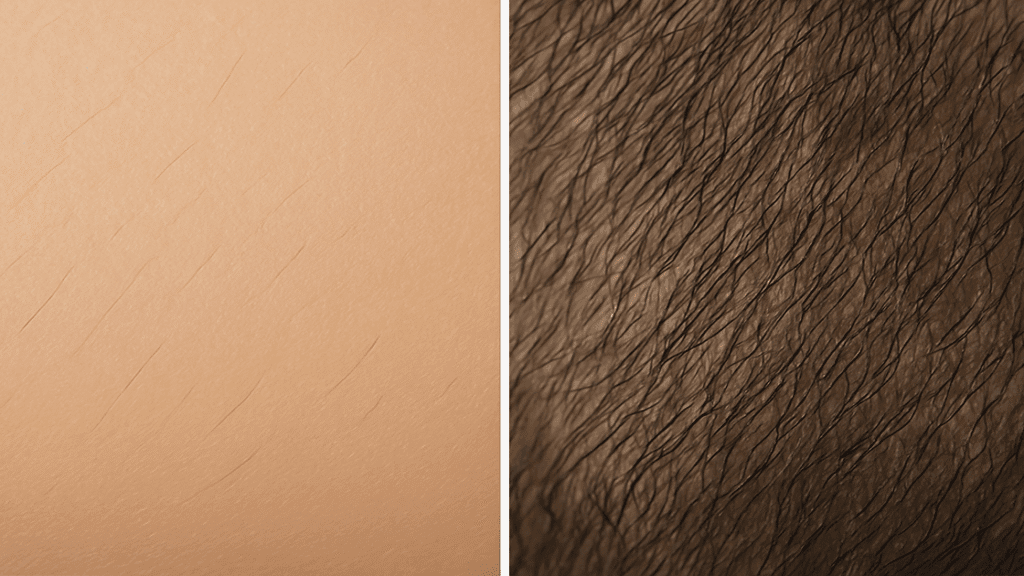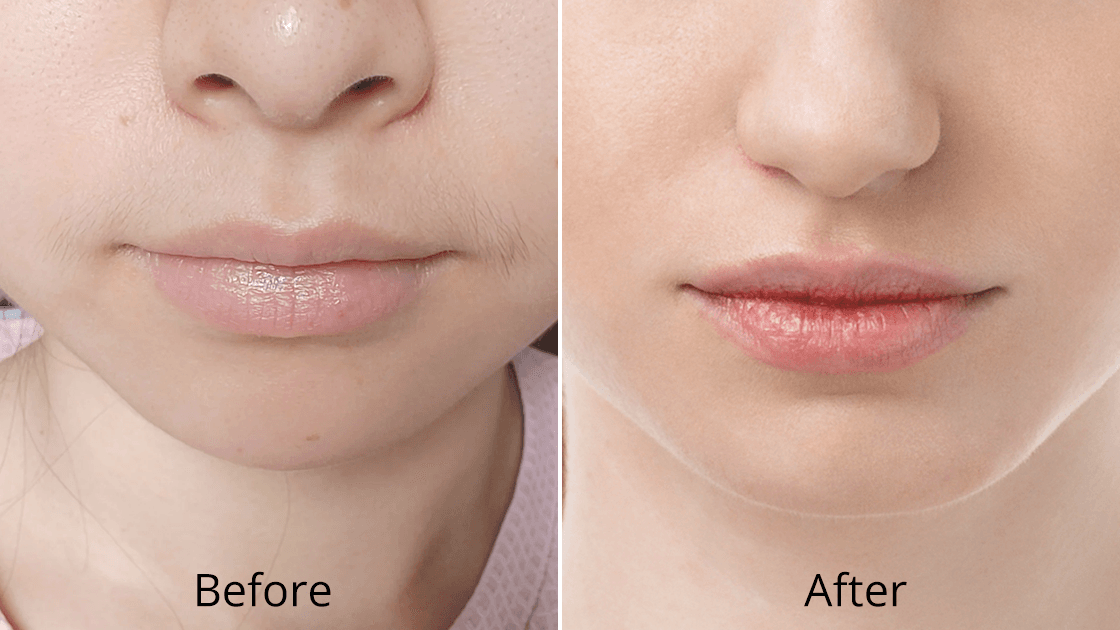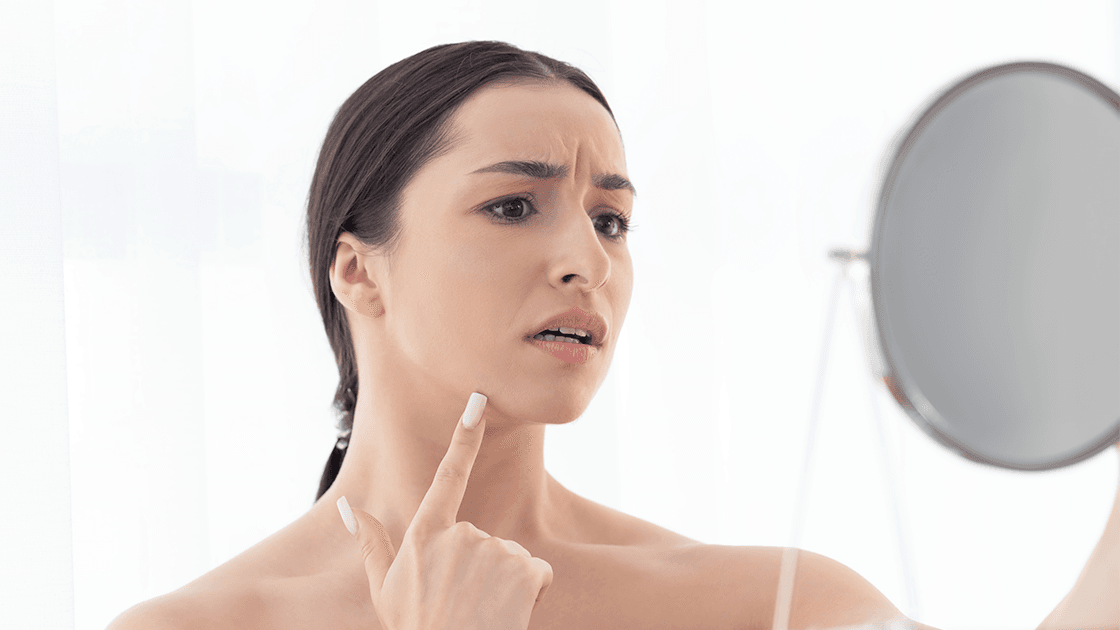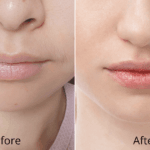1. Introduction: Understanding the Diversity of Hair Types
The human hair follicle represents one of the most complex and diverse structures in the integumentary system, with individual hair characteristics varying dramatically from person to person. Understanding these variations is crucial for achieving optimal results in laser hair removal treatments, as the effectiveness of any laser system depends heavily on the specific properties of the target hair follicles.
1.1 What Defines Fine and Coarse Hair?
Fine hair is characterized by its smaller diameter, typically measuring between 17-50 micrometers, with a delicate cortical structure that contains fewer keratin protein bundles and reduced melanin concentration within the hair shaft. The follicular unit of fine hair generally possesses smaller sebaceous glands and reduced vascular supply, resulting in lighter pigmentation and decreased optical density. Coarse hair, conversely, exhibits significantly larger diameters ranging from 71-100 micrometers, with a dense cortical structure containing abundant keratin fibers and higher concentrations of eumelanin and pheomelanin pigments. These structural differences create distinct challenges and opportunities for laser hair removal treatments.
1.2 Why Hair Texture Matters for Hair Removal
The microscopic anatomy of hair follicles directly influences the absorption and scattering of laser energy, making hair texture a critical determinant of treatment success. The cortex contains melanin, which colors the fiber based on the number, distribution and types of melanin granules, and this melanin serves as the primary chromophore for laser absorption. Fine hair presents challenges due to reduced melanin content and smaller target area, while coarse hair provides optimal conditions for laser absorption but may require higher energy levels to achieve follicular destruction. The dermal papilla size, follicular depth, and surrounding tissue characteristics all vary significantly between fine and coarse hair types, necessitating customized treatment approaches.
1.3 What Makes Diode Lasers Unique for Hair Removal?
Diode laser technology represents a significant advancement in selective photothermolysis, utilizing semiconductor-based light generation to produce coherent, monochromatic radiation at wavelengths specifically optimized for melanin absorption. Diode lasers deliver high frequency, low fluence pulses and can be safely used on all skin types, making them particularly versatile for treating diverse hair characteristics. The unique properties of diode lasers include precise wavelength control, adjustable pulse durations, and the ability to maintain consistent energy delivery across treatment areas. Unlike other laser technologies, diode systems can be engineered with multiple wavelengths and sophisticated cooling mechanisms that protect the epidermis while maximizing follicular thermal damage.
2. Diode Laser Hair Removal: The Science and Technology Behind It
The fundamental principles underlying diode laser hair removal are rooted in advanced photobiology and selective photothermolysis theory. Understanding these mechanisms is essential for appreciating how modern diode systems can effectively address the challenges presented by both fine and coarse hair types while maintaining safety across diverse skin phototypes.
2.1 How Does Laser Hair Removal Work?
Laser hair removal operates through the principle of selective photothermolysis, where specific wavelengths of coherent light are absorbed by melanin chromophores within the hair follicle, creating localized thermal damage that disrupts follicular stem cells and dermal papilla structures. The process begins when photons penetrate the epidermis and are preferentially absorbed by melanin in the hair shaft and follicular melanocytes. This absorption converts light energy into thermal energy, raising follicular temperatures to 65-70°C, which denatures proteins essential for hair growth. The thermal injury extends to the follicular epithelium, sebaceous glands, and surrounding perifollicular tissues, creating permanent or long-lasting hair reduction through follicular miniaturization and eventual destruction.

2.2 Why Diode Lasers Are Ideal for Fine and Coarse Hair
Diode treatment is unique because it can treat even the lightest, finest hairs, while simultaneously providing sufficient power density for effective treatment of coarse hair follicles. The semiconductor construction of diode lasers allows for precise control of pulse parameters, including pulse width, frequency, and energy fluence, enabling customization for different hair characteristics. For fine hair, diode lasers can utilize longer pulse durations with lower fluences to maximize melanin absorption while minimizing epidermal damage. For coarse hair, shorter pulses with higher energy densities can be employed to overcome the thermal mass of larger follicles. Additionally, Diode Laser may require multiple sessions to achieve the desired results, and it may not be as effective on lighter hair or darker skin tones, but advanced multi-wavelength systems address these limitations.
2.3 Key Factors Affecting Laser Effectiveness
Multiple physiological and technical parameters influence the efficacy of diode laser hair removal, with melanin concentration, follicular depth, hair growth phase, and skin phototype representing the primary determinants of treatment success. The anagen phase of hair growth provides optimal conditions for laser treatment, as follicles contain maximum melanin concentrations and maintain direct connection between the hair shaft and dermal papilla. Follicular depth varies significantly between body regions and hair types, with terminal hairs extending 2-7mm into the dermis, requiring sufficient laser penetration for effective treatment. Skin phototype affects epidermal melanin competition for laser energy, necessitating careful parameter selection to minimize adverse effects while maintaining therapeutic efficacy. Additional factors include hydration status, medication use, and individual variations in wound healing responses.
3. How Diode Lasers Adapt to Both Fine and Coarse Hair
The versatility of modern diode laser systems lies in their ability to dynamically adjust treatment parameters to accommodate the vast spectrum of hair characteristics encountered in clinical practice. This adaptability is achieved through sophisticated control systems and multi-wavelength capabilities that can be tailored to optimize energy delivery for specific follicular targets.
3.1 Challenges with Fine Hair in Laser Hair Removal
Fine hair presents unique challenges for laser hair removal due to reduced melanin content, smaller follicular diameter, and decreased thermal capacity, which collectively result in suboptimal energy absorption and retention. Although it is very safe, we can list a few things to keep in mind: In general, the technology is not the most effective with very light-colored and fine hairs, requiring specialized treatment approaches to achieve satisfactory results. The reduced cross-sectional area of fine hair follicles limits the available chromophore volume, necessitating longer pulse durations to allow adequate thermal diffusion. Additionally, fine hair often exhibits lighter pigmentation due to reduced eumelanin synthesis, creating competition between follicular and epidermal melanin for laser energy absorption. These factors require careful optimization of treatment parameters to maximize follicular heating while maintaining patient safety and comfort.
3.2 Coarse Hair: How Diode Lasers Handle Thick, Darker Hair
Coarse hair represents an ideal target for diode laser treatment due to abundant melanin content, large follicular diameter, and deep dermal extension that provides substantial thermal mass for sustained heating. Diode has proved effective against coarse hair and makes diode laser technology more effective for coarse hair and requires a shorter recovery time. The increased melanin concentration in coarse hair creates optimal conditions for selective photothermolysis, allowing for efficient conversion of laser energy into thermal damage. However, the larger thermal mass of coarse follicles requires higher energy fluences and optimized pulse parameters to achieve complete follicular destruction. The challenge with coarse hair lies in delivering sufficient energy to overcome thermal diffusion while preventing excessive epidermal heating and associated side effects. Modern diode systems address this through rapid pulse delivery, advanced cooling mechanisms, and precise energy control systems.
3.3 Can Diode Lasers Effectively Treat Both Fine and Coarse Hair in One Session?
Advanced multi-wavelength diode laser systems demonstrate remarkable capability in treating mixed hair types within a single treatment session through sophisticated parameter switching and real-time energy adjustment protocols. An average of 66% hair reduction was observed. Patient satisfaction was between 4 and 5 points on the GAIS scale, indicating that the treatment was very well received and tolerated when using high-power triple wavelength systems. The key to successful mixed-hair treatment lies in sequential parameter adjustment, where different areas or hair types receive customized energy delivery based on their specific characteristics. Treatment protocols typically involve initial assessment of hair density and characteristics, followed by systematic parameter adjustment as the handpiece moves across different anatomical regions. This approach maximizes treatment efficiency while maintaining consistent safety margins across diverse hair types.
4. The Best Laser Devices for Fine and Coarse Hair
The selection of appropriate diode laser technology for treating diverse hair types requires careful consideration of wavelength options, power capabilities, cooling systems, and parameter flexibility. Modern diode systems offer unprecedented versatility through multi-wavelength platforms and sophisticated control mechanisms that can be optimized for specific clinical requirements.
4.1 Best Features and Settings for Fine Hair
Optimal treatment of fine hair requires diode laser systems capable of delivering longer pulse durations (50-400ms), moderate fluences (8-25 J/cm²), and wavelengths that maximize melanin absorption while minimizing epidermal competition. The ideal system incorporates 810nm wavelength for optimal melanin absorption, combined with advanced contact cooling to protect the epidermis during extended pulse delivery. Treatment parameters should include spot sizes of 12-18mm to ensure adequate coverage while maintaining energy density, repetition rates of 1-3 Hz to allow thermal relaxation between pulses, and sophisticated motion sensors to ensure consistent energy delivery. Additionally, fine hair treatment benefits from gradual fluence escalation protocols that begin with conservative parameters and progressively increase energy levels based on tissue response. Real-time temperature monitoring and feedback systems further enhance safety and efficacy for challenging fine hair cases.
4.2 Key Features for Coarse Hair to Consider
Effective treatment of coarse hair demands diode laser systems with high peak power capabilities (up to 3000W), shorter pulse durations (10-50ms), and robust cooling systems capable of managing increased thermal loads. The optimal wavelength combination includes 808-810nm for maximum melanin absorption, with optional 940nm and 1060nm wavelengths for enhanced penetration in deeply embedded follicles. Critical features include large spot sizes (18-24mm) for efficient coverage of coarse hair areas, high repetition rates (up to 10 Hz) for rapid treatment completion, and advanced impedance monitoring to ensure consistent energy delivery despite varying tissue characteristics. Coarse hair treatment also benefits from motion-based delivery systems that maintain constant contact pressure and energy density, sophisticated plume evacuation systems to manage thermal byproducts, and integrated skin temperature monitoring to prevent overheating of surrounding tissues.
4.3 Multi-Wavelength Diode Lasers: Treating All Hair Types in One Session
Multi-wavelength diode laser platforms represent the pinnacle of hair removal technology, combining 810nm, 940nm, and 1060nm wavelengths in a single system to address the complete spectrum of hair and skin characteristics. The 810nm wavelength provides optimal melanin absorption for standard hair removal applications, while 940nm offers enhanced water absorption for improved thermal confinement, and 1060nm delivers maximum penetration for deeply embedded follicles and darker skin types. These systems typically feature independent parameter control for each wavelength, allowing simultaneous or sequential delivery based on specific treatment requirements. Advanced platforms incorporate artificial intelligence algorithms that analyze hair and skin characteristics in real-time, automatically adjusting wavelength combinations and energy parameters for optimal results. The integration of multiple wavelengths enables comprehensive treatment of mixed hair types while maintaining safety across all Fitzpatrick skin phototypes.
5. Maximizing Laser Effectiveness for Fine and Coarse Hair
Achieving optimal results with diode laser hair removal requires comprehensive understanding of pre-treatment preparation, treatment protocols, and post-treatment care specific to different hair characteristics. The integration of proper patient preparation, appropriate treatment techniques, and effective aftercare significantly enhances treatment outcomes while minimizing adverse effects.
5.1 Pre-Treatment: Preparing Fine and Coarse Hair
Avoid plucking, waxing, or electrolysis for 4–6 weeks before treatment. These methods remove the hair follicle, which is essential for the laser to target effectively.
Shave the area 24–48 hours prior to treatment, leaving hair 1–3mm long. This length ensures laser energy reaches the follicle without burning surface hair.
Avoid sun exposure for 2–4 weeks before treatment. Tanning increases melanin in the skin, which can reduce laser accuracy and raise the risk of side effects.
Gently exfoliate fine hair areas before treatment. This helps remove dead skin cells and improves laser light penetration to the follicles.
Thoroughly cleanse coarse hair areas to remove oils and residues. A clean surface prevents interference with laser energy and enhances treatment efficiency.
Discontinue photosensitizing medications and supplements. These can increase the risk of skin irritation or burns during laser therapy.
Stay well-hydrated before your session. Proper hydration helps the skin respond better and heal more quickly post-treatment.
Avoid anti-inflammatory drugs prior to treatment. These can suppress the inflammatory response needed to damage the hair follicle effectively.
5.2 What to Expect During Treatment
Diode Laser Hair Removal is one of the best and most effective methods for hair removal that can be safe, fast, and painless, with treatment sessions typically lasting 15-60 minutes depending on the area size and hair characteristics. Fine hair areas may require longer pulse durations and multiple passes to achieve adequate thermal damage, resulting in warming sensations rather than sharp pain. Coarse hair treatment involves more intense thermal reactions, with patients experiencing brief stinging sensations during pulse delivery that quickly subside with effective cooling. Modern diode systems incorporate real-time pain management through integrated cooling devices, adjustable treatment speeds, and sophisticated pulse modulation that minimizes discomfort while maintaining therapeutic efficacy. Patients should expect immediate erythema and perifollicular edema that typically resolves within 2-6 hours, followed by gradual hair shedding over 1-3 weeks as damaged follicles exfoliate naturally.
5.3 Post-Treatment Care: Maintaining Results for Fine and Coarse Hair
Apply cool compresses immediately after treatment. This helps soothe the skin and reduce redness or swelling.
Use mild, fragrance-free cleansers. Gentle cleansing prevents irritation during the healing period.
Apply broad-spectrum sunscreen daily. Sunscreen reduces the risk of post-inflammatory hyperpigmentation.
Expect delayed shedding in fine hair. Shedding may occur gradually over 2–4 weeks, so be patient.
Expect quicker shedding in coarse hair. Coarse hair often begins shedding within 1–2 weeks post-treatment.
Avoid heat, exercise, and harsh products for 24–48 hours. This minimizes inflammation and allows the skin to recover safely.
Maintain a gentle skincare routine. Consistency protects the skin barrier and supports optimal results.
Use daily sun protection. Shielding treated areas from UV damage helps preserve smooth skin.
Follow recommended treatment intervals (4–8 weeks). Timed sessions align with the anagen phase for best follicular targeting.
6. Success Stories from Fine and Coarse Hair Treatments
Real-world clinical outcomes provide valuable insights into the practical effectiveness of diode laser technology across diverse hair types and patient characteristics. These case studies demonstrate the versatility and efficacy of modern diode systems when properly applied with appropriate treatment protocols and patient selection criteria.
6.1 Case Study: Fine Hair and Diode Laser Success
Maria, a 32-year-old professional with fine, light brown facial hair, presented with hirsutism affecting her chin and upper lip area that significantly impacted her self-confidence and required daily concealing with makeup. Her hair characteristics included diameter measurements of 25-35 micrometers, moderate melanin content, and shallow follicular depth of 1.5-2.5mm. Treatment utilized a multi-wavelength diode system with 810nm primary wavelength, 30ms pulse duration, 18 J/cm² fluence, and 12mm spot size with integrated contact cooling. The treatment protocol involved 8 sessions spaced 6 weeks apart, with gradual fluence escalation from 15 J/cm² to 22 J/cm² based on tissue response. Results showed 78% hair reduction after completion of the treatment series, with remaining hairs exhibiting significant miniaturization and reduced pigmentation. Patient satisfaction scores remained consistently high throughout treatment, with minimal discomfort and no adverse effects reported.
6.2 Case Study: Coarse Hair and Diode Laser Effectiveness
James, a 28-year-old athlete, sought treatment for coarse, dark hair on his back and shoulders that interfered with his competitive swimming performance and caused frequent folliculitis from repetitive shaving. His hair characteristics included diameter measurements of 85-95 micrometers, high eumelanin concentration, and deep follicular penetration extending 4-6mm into the dermis. Treatment employed a high-power diode system with 810nm wavelength, 20ms pulse duration, 35 J/cm² fluence, and 18mm spot size with advanced sapphire cooling. The protocol consisted of 6 treatments spaced 8 weeks apart, utilizing consistent parameters due to optimal hair characteristics for laser absorption. Results demonstrated 89% hair reduction with complete clearance in 65% of the treated area and significant miniaturization of remaining follicles. The patient experienced excellent tolerance with only mild erythema lasting 2-4 hours post-treatment and achieved his desired aesthetic outcome for competitive swimming.

6.3 Mixed Hair Types: How Diode Lasers Achieve Optimal Results
Sarah, a 35-year-old marketing executive, presented with mixed hair characteristics on her legs, including fine blonde hair on the anterior aspects and coarse dark hair on the posterior and lateral surfaces, creating challenges for uniform treatment outcomes. The treatment approach utilized a sophisticated multi-wavelength diode platform capable of real-time parameter adjustment based on hair density mapping performed during the initial consultation. Fine hair areas received 810nm wavelength with 45ms pulse duration and 16 J/cm² fluence, while coarse hair regions utilized 810nm primary with 940nm secondary wavelengths, 25ms pulse duration, and 32 J/cm² fluence. The treatment protocol involved 7 sessions with customized parameter switching within each session, achieving 82% reduction in fine hair areas and 91% reduction in coarse hair regions. Patient satisfaction remained high throughout treatment due to consistent results across all anatomical areas and minimal variation in comfort levels between different hair types.
7. The Takeaway: Can Diode Lasers Handle Both Fine and Coarse Hair?
Diode lasers are highly effective for both fine and coarse hair when proper protocols and settings are used. Their versatility comes from advanced wavelength control, adjustable pulse durations, and integrated cooling systems that enable safe, efficient treatment across different hair types. Fine hair, which has less melanin and smaller follicles, responds well to longer pulses and moderate energy. Coarse hair, rich in melanin, typically responds faster and better to standard settings. Success relies on individualized assessment and optimized parameters. Multi-wavelength diode lasers boost versatility by treating mixed hair types in one session and accommodating various skin tones. Innovations like pulse modulation, AI-guided adjustments, and improved cooling continue to narrow the gap in treatment effectiveness between hair types. Overall, diode lasers provide safe, efficient, and long-lasting hair removal results, making them the preferred choice for practitioners and patients seeking comprehensive solutions for diverse hair textures.
8. FAQs
Yes, modern multi-wavelength diode lasers can effectively treat both fine and coarse hair in one session by adjusting pulse duration, fluence, and cooling. Fine hair benefits from longer pulses and moderate energy, while coarse hair requires shorter pulses and higher intensity. Adapt settings based on the hair type being treated.
Diode lasers are safe for all skin tones, including darker types (Fitzpatrick IV–VI), when proper parameters are used. Longer wavelengths and strong cooling reduce skin risk. Adjusted pulse durations and test spots ensure safe and effective treatment for diverse skin phototypes.
Coarse hair often shows results after 2–3 sessions, with shedding starting in 1–2 weeks. Fine hair may need 4–6 sessions for noticeable results, shedding in 2–4 weeks. Full treatment usually takes 6–12 sessions spaced 4–8 weeks apart, depending on hair type.
Discomfort is generally minimal. Fine hair treatments feel like mild warmth due to lower energy, while coarse hair may cause brief stinging. Most systems use strong cooling to reduce discomfort. Topical numbing creams and pulse modulation also help improve comfort.
Yes, modern diode lasers treat both fine and coarse hair effectively when equipped with adjustable settings, variable pulse durations, and advanced cooling. Multi-wavelength systems offer the most flexibility, allowing safe, customized treatment based on hair type and skin tone.








